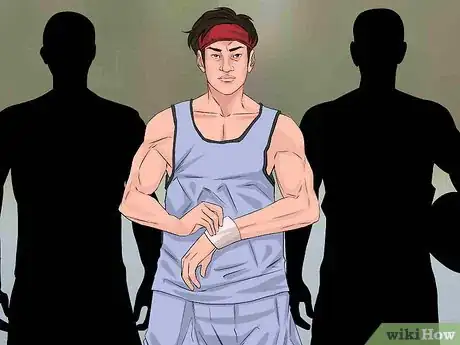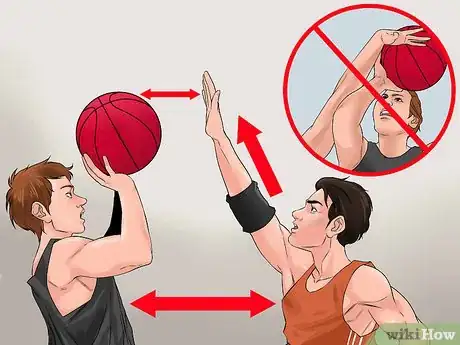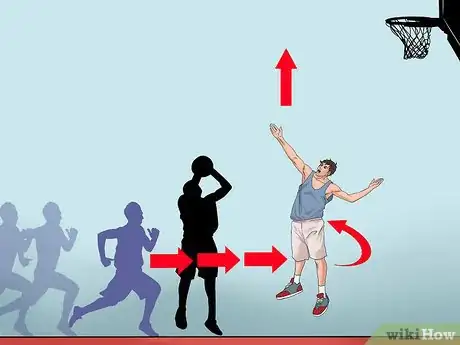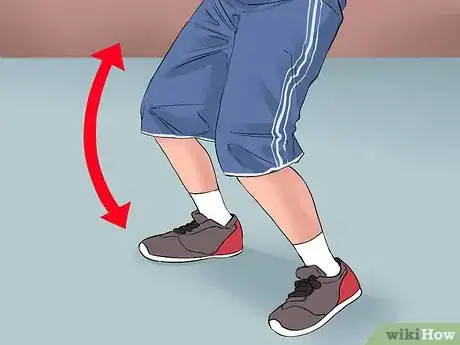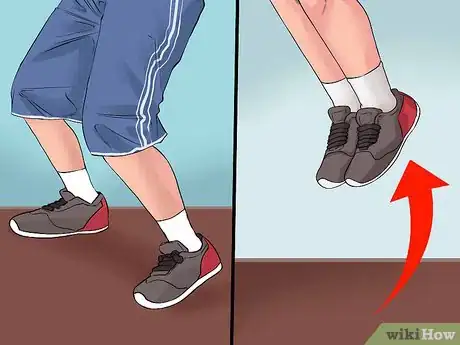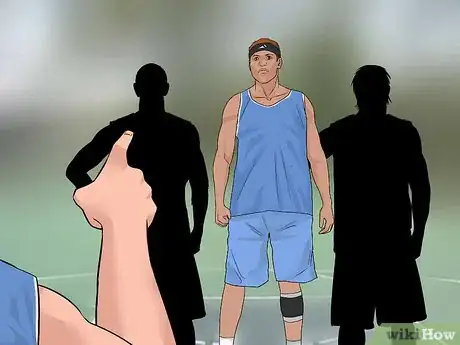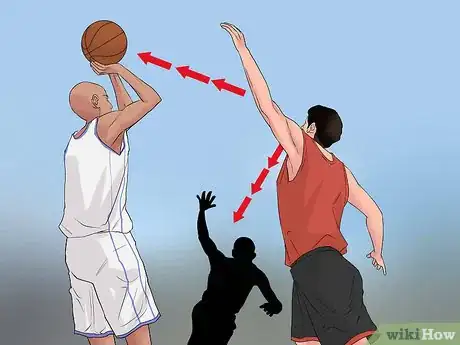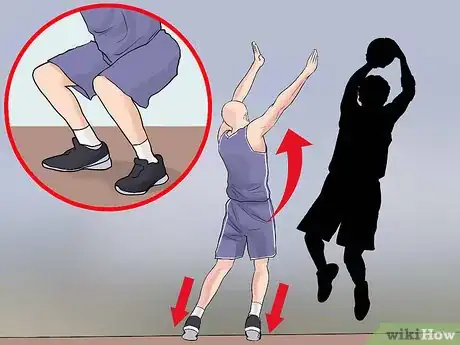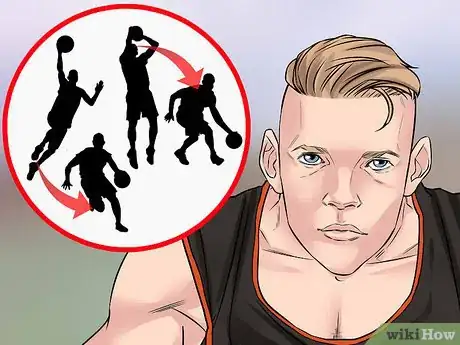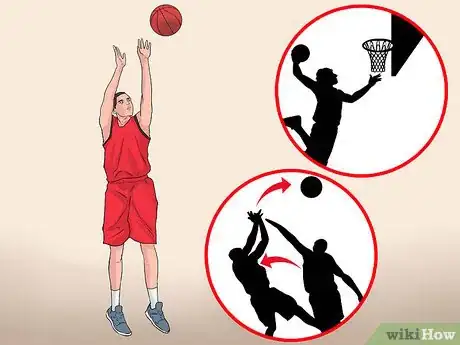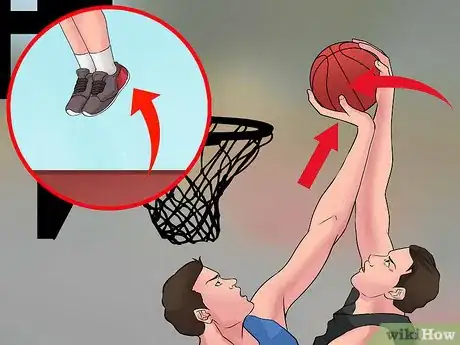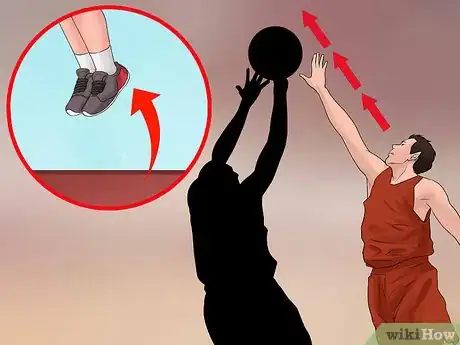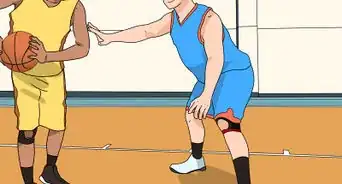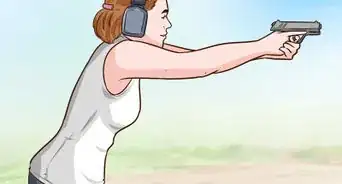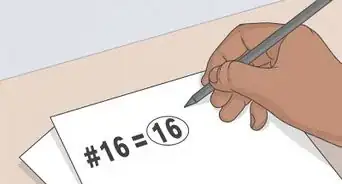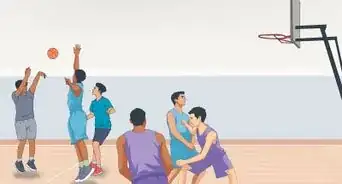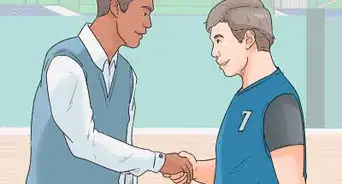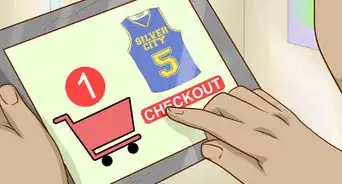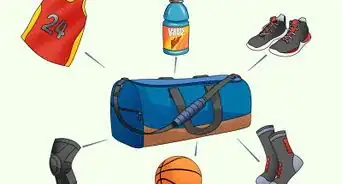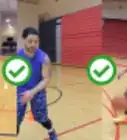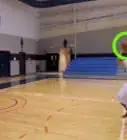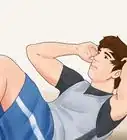This article was co-authored by Ryan Tremblay. Ryan Tremblay is a Basketball Coach and the Owner of National Sports ID and STACK Basketball. With over 30 years of experience, Ryan specializes in basketball coaching, social media marketing, and website design. Ryan created the National Sports ID as a platform to verify the age/grade of youth athletes and STACK Basketball to inspire young athletes to grow into mature individuals and basketball players. Ryan was a First Team All-Decade basketball player in Bergen County and finished in the top 20 all-time leading scorers in the county’s history with 1,730 points. He went on to Caldwell University on a basketball scholarship where he was part of three championship teams. Ryan was a two-time All-Metropolitan, All-State, and All-Conference point guard and the all-time three-point leader in the school’s history, landing him in the Caldwell University Athletic Hall of Fame.
There are 7 references cited in this article, which can be found at the bottom of the page.
This article has been viewed 141,211 times.
Because basketball is a high-speed sport with a lot of scoring, a skilled shotblocker can mean the difference between a team's defeat or victory. Blocking your opponents' shots constantly will have a negative psychological effect on their morale.[1] Even if you prefer playing on the offensive, it's a good idea to sharpen up your blocking skills.
Steps
Practicing Your Blocking Technique
-
1Assemble a group of three. In order to properly practicing blocking, you'll need three players. One person will do the passing, the second will try to receive the ball, and the third will execute the block. If you're practicing for the sake of playing competitively, it's a good idea to practice with your teammates. After all, improving their blocking skills will work out for your team just as much as honing your own. You should alternate between each of the three positions while you practice. This will make you a more dynamic player, and it will give the other players a chance to practice blocking too.
- If you have a coach, he will try passing the ball.
- You can do this with two players as well. If you're blocking, stand in front of a wall and try to block shots from hitting the wall. A two player practice isn't as recommended however, as it robs the dynamic element from the exercise.
-
2Avoid contact with the shooting player.[2] The most common method of getting a foul call is through physical contact with a member of the opposing team.[3] This happens often when players are attempting to block shots. As a result, you should cater your blocking to minimize risks of bumping into a player. This can be helped by jumping upward, and using your body as an obstacle, rather than actively reaching out and grabbing the ball.
- You shouldn't try to actively grab the ball out of the opposing player's hands. If you do, you'll get a foul call. A foul call will offer the other side a chance to get a 3 point shot without risk of being tampered with by your side.
Advertisement -
3Run and rotate between the shooter and net.[4] Although height and size are obviously important to shot blocking, agility is necessary in order to get you to a place where you can block. In competitive environments, opposing players are going to be moving fast. In most cases, you'll only have a few seconds to get between the other player and the net. Run to block the other player's path, and rotate quickly to face them.
- It may help to do "run and rotate" exercises in your own time. Luckily, these can be accomplished without help from anyone else.
-
4Stabilize your feet.[5] Keeping your feet in control during all stages of a blocking technique will limit the risk of a foul, and ensure you're in proper position to continue playing smoothly once the block is completed.[6] Don't put one foot in front of the other. Keep them evenly spaced apart, and relatively parallel with one another.
- As you ready yourself for a blocking move, it's good to arch your legs in a squatting stance. This will give you the built-up force necessary to execute a proper block.
-
5Master your jump timing.[7] Because jump shots are some of the most-used shots in basketball, knowing how to time your jump is imperative. Hold your blocking hand up to give yourself extra height, and jump up to meet the opposing player at his highest point. One way to time properly is to watch the other player's feet as they leave the ground. This will only allot you a split-second of time to react, but with enough practice, you'll begin to find yourself jumping on instinct.
- Jump directly upwards when you're blocking. This will limit the risk of coming into contact with the other player.
-
6Block using the hand closest to the ball.[8] In executing a block, you'll need to raise one of your hands up in the air to impede the ball's course. The surest way of deflecting a ball is to use the hand that's closest to the ball relative to your body. While most players will harbour a preference of one blocking hand over another, it's important to get both hands versed in blocking mechanics. This will make you a more versatile, and therefore more effective player.
- It's important to use your hand as an obstacle impeding the natural arc of the ball, rather than reaching out and grabbing it. Grabbing the ball directly could result in a foul call.
-
7Practice until it's second nature. Like all competitive sports, some of your success in basketball will rely on your honed instincts. This sort of thing only comes with a lot of practice. Even when you're blocking shots consistently, it's a good idea to keep pushing yourself until you're able to do so without consciously thinking about it.
Executing Blocks in a Competitive Setting
-
1Choose the right shot blockers on your team.[9] Generally speaking, the best shotblockers are the players with the largest or tallest bodies. Although speed is also necessary, taller players represent a more difficult obstacle to shoot past. It may not be fair, but it does make sense from a practical standpoint.
- In competitive settings, the choice of shot blockers is usually left up to the coach.
-
2Anticipate shots from the other team. Situational awareness is important during any basketball game. Keep your eyes peeled and be aware of what the other team's players are up to, even if they don't have the ball at the moment. If you stay focused on where the other players are, you'll be able to predict where you need to be to block shots when it counts.
-
3Fake a block.[10] Part of a successful technique relies on tricking the other player. Follow up the initial steps of a blocking move. Squat your legs in front of the player and act as if you're about to jump. The other player will see you do this and rework his technique to counter the predicted block. Shooters who are worrying about blocking players tend to be less accurate. Better still, because you're technically not executing a move, there's no risk of incurring a foul.
-
4Weigh the risk of a potential foul call.[11] If you get a foul against your team, the other side will have a chance to get a clear 3 point goal. This doesn't make it worth it to attempt blocking all shots, especially if there's a risk for physical contact with the other player. Don't try to block a shot on the court perimeter. Even if the shot was going to miss anyway, you'll likely get a foul called on your team.
-
5Stay dynamic. Unlike in a practice setting, the players you're facing up against are going to be constantly changing up their tactics. This is especially true if you've been having a lot of success with blocking a certain kind of shot so far into the game. As you're playing, try to get into the other team's heads. If you're able to identify which moves each player is most likely to execute, you'll have a better chance at predicting them before they happen.
Troubleshooting Your Blocking Technique
-
1Practice a versatile range of shots. The most successful athletes are defined by their ability to accommodate for a wide range of techniques. In a competitive environment, you can't depend on the other team to use one kind of shot. If you feel like you've mastered certain blocks but other players are still getting shots past you, it is likely you haven't taken all possible shots into account yet. Here are some common shots to look out for:
- A jump shot is the most common shot. To gain height, offensive players will jump in the air and throw the ball towards the net.
- A slam dunk is the most efficient shot in basketball. This is where an offensive player runs directly up the court, jumps up, and delivers it directly into the net.
- A fadeaway is an advanced shot where the offensive player will lean away from the net as he throws it in. This is done to avert the efforts of blocking players. It can be resisted by putting your arms in the predicted path of the basketball.
- A faked shot is where an offensive player lines up a shot but doesn't actually throw the ball. This is done for psychological reasons of tricking up the opposing team.
-
2Jump up to fend a slam dunk. Slam dunks are considered very risky shots, as it's difficult to get a proper block without incurring a foul call.[12] If you do attempt to block a slam dunk, get in between the net and the other player and jump directly up, aiming your hand in the path of the ball.
-
3Accommodate to block a fadeaway shot.[13] A fadeaway shot is where a shooting player will hop backwards as he throws the ball towards the hoop. This tactic is specifically geared to trick up a blocking player. To maximize your chances of blocking a fadeaway, jump up between the ball and the net and extend your hands towards the ball.
- Don't swing your arms unnecessarily around as you're blocking. This will incur a foul call.[14]
-
4Focus on your jumping. A significant part of blocking shots in basketball involves the proper use of jumping. Jumping is a muscle-based exercise, but it's not often seen as a primary workout focus for many players. Practice doing sets of vertical jumps, attempting to get as much force off the ground as you can. Next, add on to this exercise by holding barbells in each hand and jumping with them. This will increase the pressure on your legs, making them better-suited for jumping blocks when you play competitively.[15]
Expert Q&A
Did you know you can get expert answers for this article?
Unlock expert answers by supporting wikiHow
-
QuestionHow can I avoid a foul while blocking in basketball?
 Ryan TremblayRyan Tremblay is a Basketball Coach and the Owner of National Sports ID and STACK Basketball. With over 30 years of experience, Ryan specializes in basketball coaching, social media marketing, and website design. Ryan created the National Sports ID as a platform to verify the age/grade of youth athletes and STACK Basketball to inspire young athletes to grow into mature individuals and basketball players. Ryan was a First Team All-Decade basketball player in Bergen County and finished in the top 20 all-time leading scorers in the county’s history with 1,730 points. He went on to Caldwell University on a basketball scholarship where he was part of three championship teams. Ryan was a two-time All-Metropolitan, All-State, and All-Conference point guard and the all-time three-point leader in the school’s history, landing him in the Caldwell University Athletic Hall of Fame.
Ryan TremblayRyan Tremblay is a Basketball Coach and the Owner of National Sports ID and STACK Basketball. With over 30 years of experience, Ryan specializes in basketball coaching, social media marketing, and website design. Ryan created the National Sports ID as a platform to verify the age/grade of youth athletes and STACK Basketball to inspire young athletes to grow into mature individuals and basketball players. Ryan was a First Team All-Decade basketball player in Bergen County and finished in the top 20 all-time leading scorers in the county’s history with 1,730 points. He went on to Caldwell University on a basketball scholarship where he was part of three championship teams. Ryan was a two-time All-Metropolitan, All-State, and All-Conference point guard and the all-time three-point leader in the school’s history, landing him in the Caldwell University Athletic Hall of Fame.
Basketball Coach
-
QuestionHow do I block if I am short?
 Community AnswerYour best chance is to block the ball as the person is jumping up or stealing. This is a better option for smaller players.
Community AnswerYour best chance is to block the ball as the person is jumping up or stealing. This is a better option for smaller players. -
QuestionHow do I shoot if the defense is blocking me?
 Community AnswerTry to step back or pass to your teammates and shoot. You can try to crossover and shoot.
Community AnswerTry to step back or pass to your teammates and shoot. You can try to crossover and shoot.
Warnings
- Even if you attempt to block the ball, it doesn't always mean that you'll succeed. Anytime a ball gets past you, try to accommodate for what you may have done wrong.⧼thumbs_response⧽
References
- ↑ http://www.kidzworld.com/article/5215-top-nba-shotblockers
- ↑ http://www.sportingcharts.com/dictionary/nba/blocking-foul.aspx
- ↑ Ryan Tremblay. Basketball Coach. Expert Interview. 13 November 2020.
- ↑ http://www.kidzworld.com/article/5215-top-nba-shotblockers
- ↑ http://functionalbasketballcoaching.com/the-forgotten-art-of-shot-blocking-technique-breakdown/
- ↑ Ryan Tremblay. Basketball Coach. Expert Interview. 13 November 2020.
- ↑ https://www.myactivesg.com/sports/basketball/training-methods/basketball-for-beginners/how-to-block-against-the-different-types-of-scoring-shots
- ↑ http://www.usab.com/youth/news/2012/04/8drills-to-create-a-great-shot-blocker.aspx
- ↑ http://www.usab.com/youth/news/2012/04/8drills-to-create-a-great-shot-blocker.aspx
- ↑ http://functionalbasketballcoaching.com/the-forgotten-art-of-shot-blocking-technique-breakdown/
- ↑ http://www.usab.com/youth/news/2012/04/8drills-to-create-a-great-shot-blocker.aspx
- ↑ https://www.myactivesg.com/sports/basketball/training-methods/basketball-for-beginners/how-to-block-against-the-different-types-of-scoring-shots
- ↑ https://www.myactivesg.com/sports/basketball/training-methods/basketball-for-beginners/how-to-block-against-the-different-types-of-scoring-shots
- ↑ https://www.myactivesg.com/sports/basketball/training-methods/basketball-for-beginners/how-to-block-against-the-different-types-of-scoring-shots
- ↑ http://www.mensfitness.com/training/pro-tips/basketball-skill-training-increase-your-vertical-jump?page=2
About This Article
To block a shot in basketball, get between the shooter and the net so you can use your body as an obstacle. Then jump straight up in the air and reach up for the ball with your hand. You can also practice blocking with the help of two teammates. Ask them to pass and shoot the ball, and try to block it! During the game, keep your eyes on opposing players even when they don't have the ball to get a better idea of where you need to be to block a shot. For tips on stopping different types of shots, like jump shots, slam dunks, or fadeaways, keep reading!
